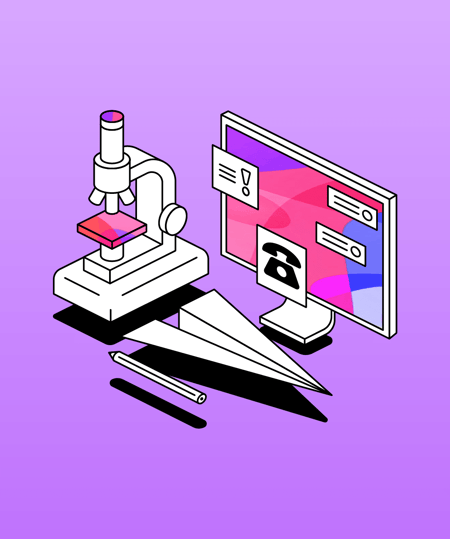Access All Areas: Missouri State University on advocating for UDL
“Never shut your mouth about UDL” Timothy McHenry, Technical Director at Missouri State University. A key advocate for embracing UDL and also using the amazing technology we have today to help students learn.
 1 min read
1 min read
 Published: 12 Mar 2024
Published: 12 Mar 2024
 Chileshe Jackson
Chileshe Jackson


Feeling defeated by the resistance to Universal Design for Learning (UDL)? You're not alone.
Many disability services face pushback, making it tough to create truly inclusive campuses.
We recently spoke with Timothy McHenry, Technical Director at Missouri State University, who has a wealth of experience in both tech and disability services.
He's passionate about making accessibility a reality on campus, and shared some top tips and tricks for advocating across campus.
How to advocate for Universal Design for Learning (UDL)
The cornerstone of creating a truly accessible learning environment lies in Universal Design for Learning (UDL).
By going beyond simple accommodations; UDL proactively builds flexibility and inclusivity into the curriculum from the very beginning.
However, achieving widespread adoption of UDL can face an unexpected hurdle: a lack of understanding.
Here are some tips to break down barriers and spark positive conversations with faculty about UDL:
Tip #1: Persistence is key
Don't be discouraged by initial pushback. Focus on educating faculty about UDL and addressing their specific concerns.
Tip #2: Educate faculty by addressing specific concerns
Focus on educating faculty about UDL and addressing their specific concerns.
For instance, faculty members who worry about intellectual property, with technology like screen recording software, can be reassured by the data protection features of such tools.
Tip #3: Tailor your approach and speak their language
When advocating for UDL, tailor your approach to resonate with faculty by speaking their language.
Timothy shared how he specifically tries to talk to faculty as though he is faculty. That way, he can understand where they're coming from.
Tip #4: Highlight the positive outcomes for the student
Focus on the benefits!
By emphasizing positive student outcomes, such as improved GPAs, achieved through UDL practices, advocating for the approach becomes much more compelling.
Tip #5: Give practical examples
Offer Practical Examples; by providing concrete examples of how UDL can be implemented in different disciplines, faculty can begin to visualize the benefits in their own classrooms.
Tip #6: Share success stories
Don't forget to share the wins! Showcase successful UDL implementations on your campus or others.
Sharing positive experiences can inspire faculty to adopt UDL in their own teaching.
Final thoughts
The key to successful UDL advocacy lies in open communication and collaboration.
Remember, most professors are passionate about teaching and want their students to succeed. Frame UDL as a way to support them in achieving their teaching goals.
By identifying the source of faculty pushback and addressing it collaboratively, institutions can create a more inclusive learning environment for all students.
Enjoyed this blog? Watch the full webinar here.
More from Disability Services
View All
 4 min read
4 min read
Navigating budget restrictions: a comprehensive guide to maximizing departmental resources
Higher education professionals face increasing pressure to do more with less and maximize limited resources. In this article, we explore tips, strategies, and success stories for adopting assistive technology and effectively planning budgets.

 2 min read
2 min read
The power of inclusive language and technology
In a recent webinar, Leslie Smith, Manager of the Access Center at Volunteer State Community College, shared a powerful insight into the transformative impact of language and technology.

 3 min read
3 min read
The future of disability services in higher education
Disability services are experiencing significant change. To explore this, and how they may continue to evolve, we sat down with Christa Price, Assistive Technology Specialist at California State University, Northridge, and Aaron Holmes, Access Specialist at MiraCosta College.





